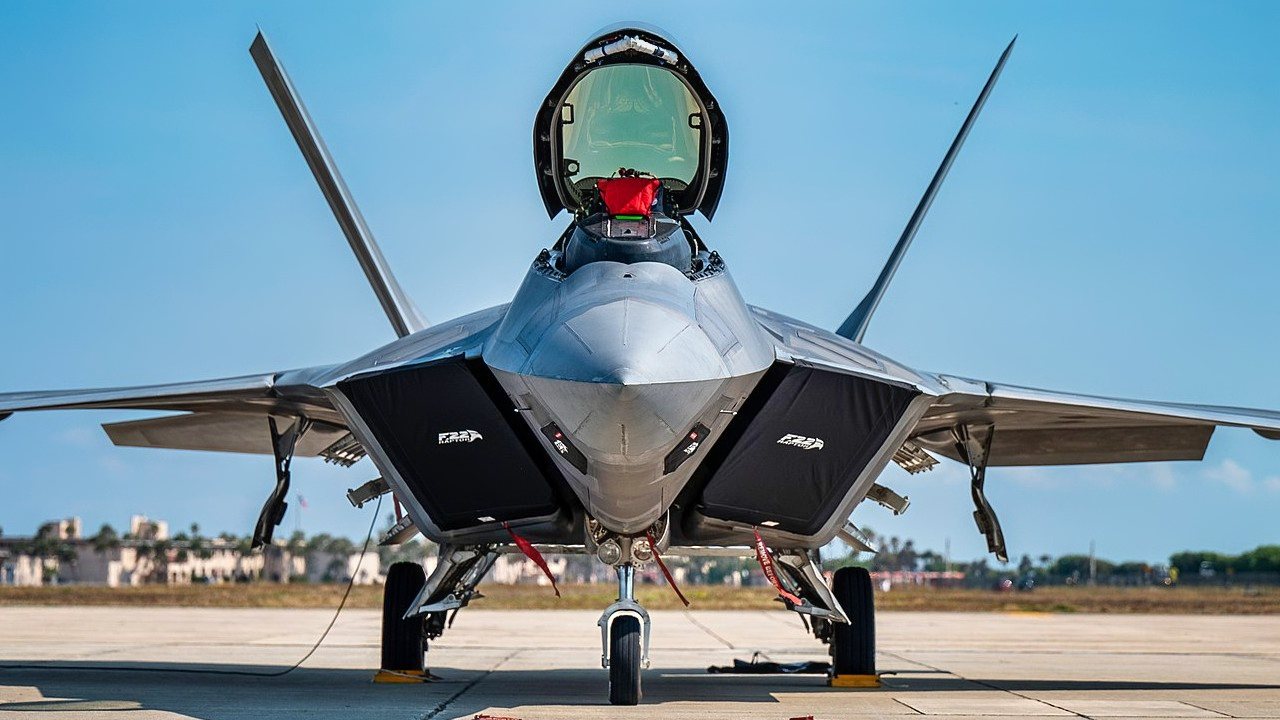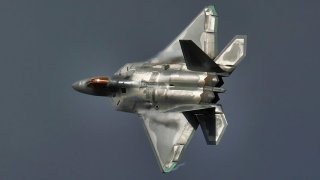Could the F-22 Raptor Fly from U.S. Navy Aircraft Carriers?
With the U.S. Air Force planning to retire the F-22 in favor of the Next-Generation Air Dominance (NGAD) program, the Raptor will likely never operate from aircraft carriers.
Summary: The American-made F-22 Raptor, known for its stealth and maneuverability, is not suitable for aircraft carriers despite its impressive capabilities.

-Initially designed to counter Soviet jets during the Cold War, the Raptor became the world's first fifth-generation jet.
-However, its inability to operate from carriers stems from its weight, lack of training for carrier landings, and the need for significant modifications to the airframe.
-These modifications would compromise its stealth and increase maintenance costs.
-With the U.S. Air Force planning to retire the F-22 in favor of the Next-Generation Air Dominance (NGAD) program, the Raptor will likely never operate from aircraft carriers.
Why the F-22 Raptor Will Never Be Carrier-Capable
The American-made F-22 Raptor may be the most widely recognizable fighter platform to ever take to the skies.
As the world’s first-ever fifth-generation jet, the Raptor became a record-breaker the moment it entered service with the U.S. Air Force.
From its tiny radar cross-section to its killer maneuverability, the F-22 is well deserving of its honorable legacy.
While the Raptor can pretty much accomplish any task with its incorporated ground attack, electronic warfare, and signals intelligence capabilities, there is one important skill set the fighter has yet to master.
The world’s most respected air superiority platform is not carrier-capable.
The origin story of the F-22 Raptor:
As a critical component of the Global Strike Task Force, the Raptor was designed to lead the way in aviation. Born out of the Air Force’s requirement for an Advanced Tactical Fighter (ATF), the Raptor was meant to better combat the Soviet’s growing fleet of advanced jets during the height of the Cold War.
Although the existing F-15 Eagle and F-16 Fighting Falcon platforms were formidable fighters during this period, the Soviets were working hard to develop near-peer airframes. Manufacturer Lockheed Martin, through its Skunk Works division, teamed up with Boeing and General Dynamics to design the Y-22 prototype.
When the Raptor first entered service with the USAF, it became the first platform to combine stealth, supermaneuverability and super cruise in a singular airframe. Perhaps the Raptor’s greatest attributes are its small radar cross-section and twin thrust-vectoring F119 turbofan engines.
Possessing a smaller radar cross-section makes it more challenging for enemy aircraft to detect. In addition to its unparalleled stealth, the F-22 is also a powerful dogfighter.
Each Raptor can carry air-to-air and air-to-ground weapons including precision-guided ground bombs like the Joint Direct Attack Munitions. The fighter can also lug six AIM-120 AMRAMS and two AIM-9 Sidewinders when in the air-to-air configuration.
Why aren’t F-22 Raptors suitable for carrier operations?
Regardless of the F-22 Raptor’s prowess, this fifth-generation platform is incapable of landing on a carrier. In a nutshell, Air Force pilots are simply not trained to fly on aircraft carriers. In addition to this lack of training, Raptors are quite hefty, weighing roughly 45,000 pounds.
As explained by The Aviation Geek Club, “No carrier CO is going to risk massive damage to his flight deck (essentially a major component of his only offensive weapon system) by letting 45,000 pounds of nasty slam into it. While they could likely generate enough wind to get the approach speed down to 100 knots, that’s still far too much energy for the landing gear to absorb. While the F-22 probably has the specifications to be able to land in the netting ashore, those are systems where the aircraft lands and then enters the gear a couple thousand feet later. In this instance, the jets have to slam down into the deck immediately before the barricade. At the descent rates we’re talking about the gear would collapse, likely just piercing through the jet and damaging the integrity enough that it would start losing parts either before or as it entered the netting.”

In order for the Raptor to be suitable for carrier duty, Lockheed Martin would have to heavily modify the airframe. Engineers would have to incorporate a variable sweep-wing design on the Raptors, which are pricey to maintain and which would impact the fighters’ low observability.
Since the Air Force is actively seeking to retire its dwindling fleet of Raptors as its Next-Generation Air Dominance (NGAD) program emerges, the F-22 will likely never see the flight deck of an aircraft carrier.
About the Author: Maya Carlin
Maya Carlin, National Security Writer with The National Interest, is an analyst with the Center for Security Policy and a former Anna Sobol Levy Fellow at IDC Herzliya in Israel. She has by-lines in many publications, including The National Interest, Jerusalem Post, and Times of Israel. You can follow her on Twitter: @MayaCarlin.
Image Credit: Shutterstock for main image. All others are Creative Commons.


